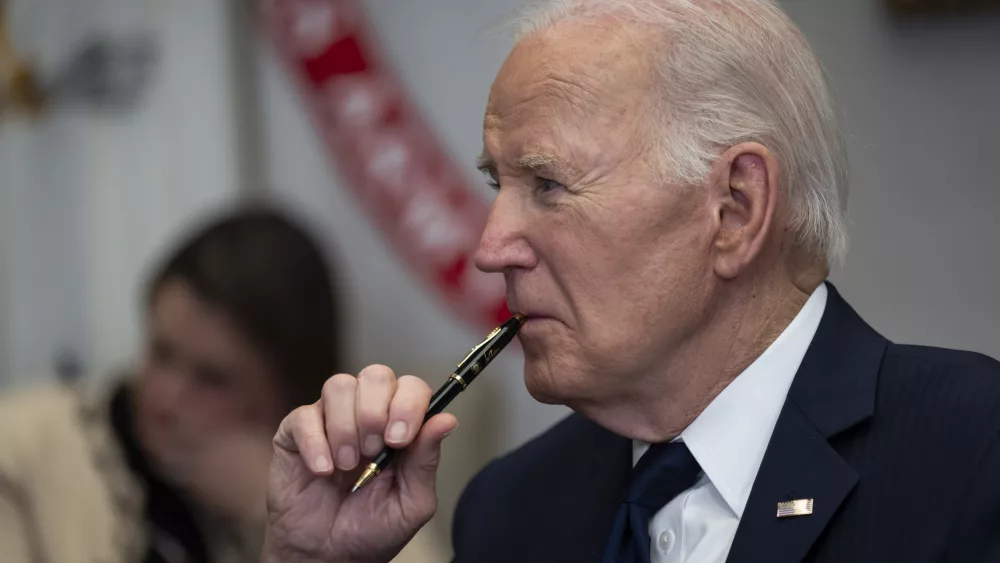WASHINGTON (AP) — Americans on Friday will get their last major look at the state of the U.S. economy — the October jobs report — just four days before Election Day. The view, though, is likely to be obscured by the effects of strikes and hurricanes that left many workers temporarily off payrolls.
The Labor Department is expected to report that employers added just under 118,000 jobs last month, according to forecasters surveyed by the data firm FactSet. That would be a decent if hardly spectacular gain. But it would mark a sharp drop from the unexpectedly strong 254,000 jobs that the economy added in September.
Economists have cautioned, though, that Hurricanes Helene and Milton, combined with ongoing strikes, including one by machinists at Boeing, had the effect of pushing down net job growth in October. Lydia Boussour, a senior economist at the tax and consulting firm EY, said she expects the government to report that just 70,000 jobs were gained in October. By her calculations, the hurricanes and the strikes combined to subtract as many as 111,000 jobs from payrolls last month.
“The October jobs report will be muddied,’’ Boussour wrote in a commentary. “We believe the true underlying pace of job growth was likely around 170,000 in October.” At the same time, the unemployment rate is expected to stay at a low 4.1%, according to the FactSet survey.
By any measure, such figures are those of a healthy job market — not quite as robust as it was early this year but still solid and steady. Combined with an inflation rate that has tumbled from its 2022 peak to near pre-pandemic levels, the overall economy appears on solid footing on the eve of Election Day.
Economists have noted, too, that the United States has the strongest of the world’s most advanced economies, one that has proved surprisingly durable despite the pressure of high interest rates. This week, for example, the government estimated that the economy expanded at a healthy 2.8% annual rate last quarter, with consumer spending — the heart of the economy — helping drive growth.
Yet as voters choose between former President Donald Trump and Vice President Kamala Harris, large numbers of Americans have said they are unhappy with the state of the economy. Despite the plummeting of inflation, many people are exasperated by high prices, which surged during the recovery from the pandemic recession and remain about 20% higher on average than they were before inflation began accelerating in early 2021.
The blurriness of the October jobs data could lead some Republican political figures to once again question the credibility of the government’s employment figures, especially if they turn out stronger than economists expect. Sen. Marco Rubio, for example, a Florida Republican who is a onetime Trump critic turned unabashed supporter, has baselessly claimed that the surprisingly strong September jobs report was “fake.’’
Yet no mainstream economists share such skepticism. And other economic barometers, like the number of people seeking unemployment benefits — data that is compiled mostly by the states — also point to a still-solid job market.
With inflation having significantly cooled, the Federal Reserve is set to cut its benchmark interest rate next week for a second time and likely again in December. The Fed’s 11 rate hikes in 2022 and 2023 managed to help slow inflation without tipping the economy into a recession. A series of Fed rate cuts should lead, over time, to lower borrowing rates for consumers and businesses.
In the meantime, there have been signs of a slowdown in the job market. This week, the Labor Department reported that employers posted 7.4 million job openings in September. Though that is still more than employers posted on the eve of the 2020 pandemic, it amounted to the fewest openings since January 2021.
And 3.1 million Americans quit their jobs in September, the fewest in more than four years. A drop in quits tends to indicate that more workers are losing confidence in their ability to land a better job elsewhere.
Brought to you by www.srnnews.com








